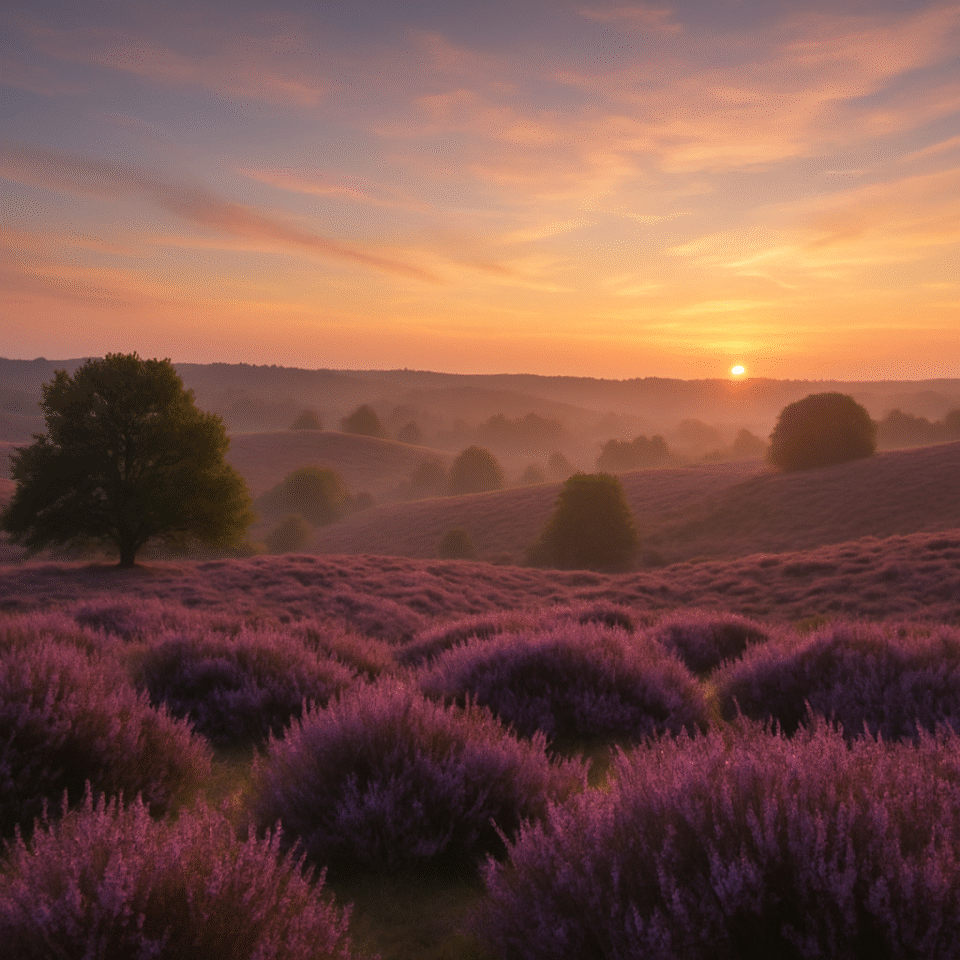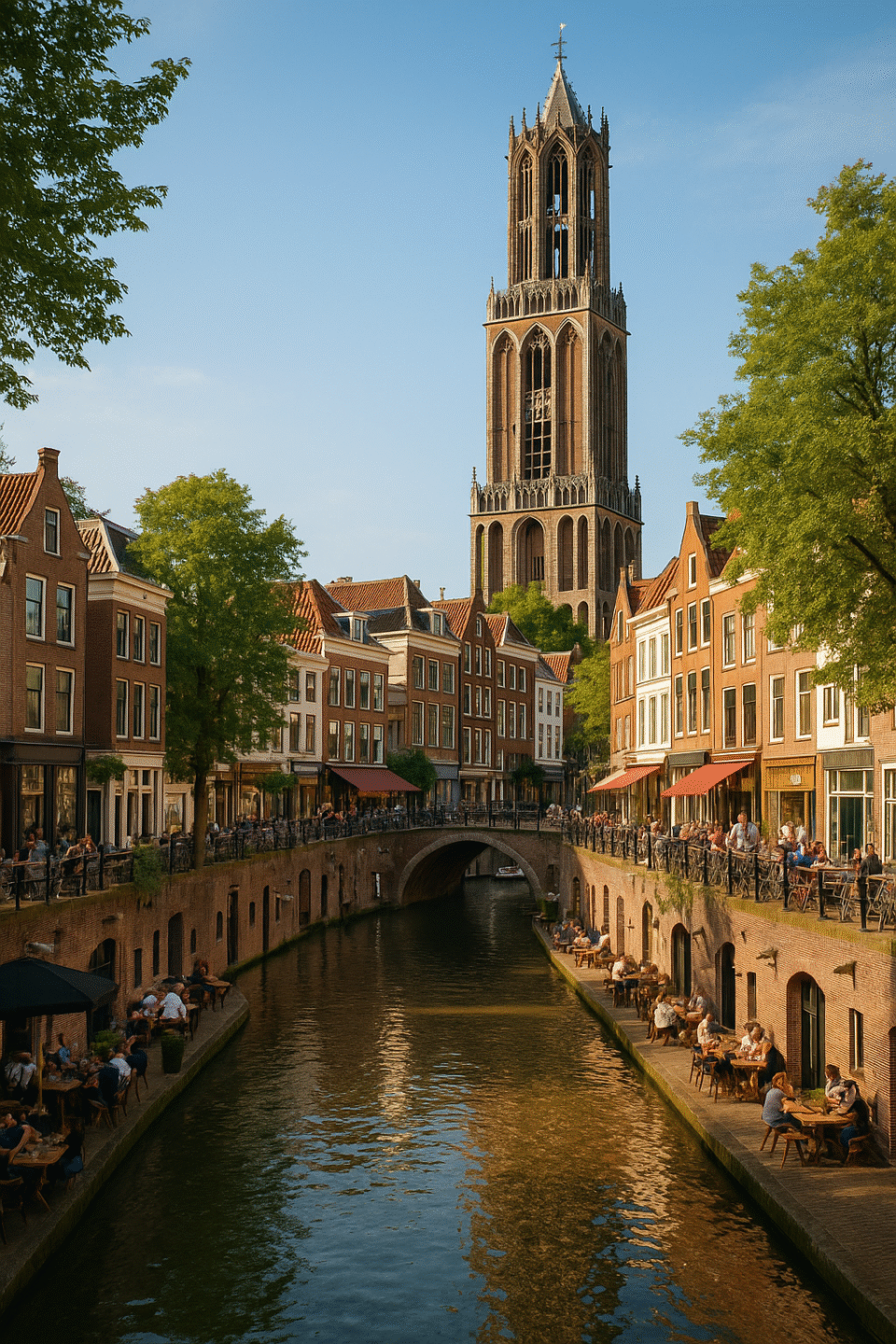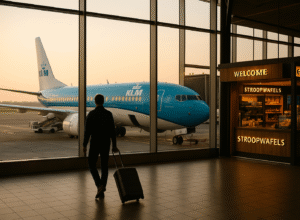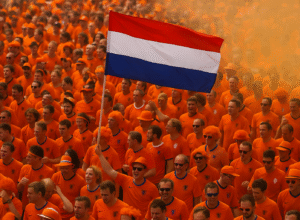The Netherlands is known worldwide for its cities and polders, but many Americans are surprised to learn about the country’s stunning natural landscapes. This article explores the Veluwe, one of the country’s most beloved natural areas, and why it deserves a spot on your Dutch itinerary.
In a country famous for its picture-perfect canals and tulip fields, the Veluwe stands as a refreshing revelation. This expansive natural area, covering over 1,000 square kilometers in the eastern Netherlands, offers something many visitors don’t expect to find in this densely populated country: wilderness. With ancient forests, shifting sand dunes, heathlands, and diverse wildlife, the Veluwe provides a striking contrast to the meticulously planned Dutch urban landscapes. Curious about experiencing a different side of the Netherlands? Let’s explore what makes this region so special and why Americans should add it to their Dutch adventure.
What Exactly is the Veluwe?
The Veluwe is the largest continuous nature reserve in the Netherlands, located in the province of Gelderland. Formed during the Ice Age, this area features a unique landscape shaped by glacial deposits that created rolling hills (unusual in the otherwise flat Netherlands) and sandy soils. Over centuries, this distinct terrain has evolved into a diverse ecological system comprising:
- Dense forests of pine, oak, and beech
- Europe’s largest actively drifting sand dunes
- Vast heathlands that turn vibrant purple in late summer
- Numerous lakes and small rivers
- Diverse wildlife habitats
For Americans familiar with national parks like Yellowstone or Yosemite, the Veluwe offers a different experience—less dramatic perhaps, but with a quiet, accessible charm that reveals the Netherlands’ commitment to preserving natural landscapes despite land scarcity.
Wildlife Spotting in the Veluwe
One of the Veluwe’s greatest attractions is its wildlife. The area is home to:
- Red deer and wild boars (the Dutch equivalent of larger American wildlife)
- Mouflon (wild sheep introduced in the early 20th century)
- Numerous bird species, including the rare black woodpecker
- Reptiles like the sand lizard and smooth snake
Unlike many American wildlife experiences, where animals might be viewed from a distance, the Veluwe offers surprisingly intimate encounters. Dawn and dusk provide the best opportunities for wildlife watching, with several designated observation points throughout the park.
Cultural Attractions Within the Natural Setting
The Veluwe isn’t just about nature—it’s also home to some remarkable cultural attractions:
- Kröller-Müller Museum, housing the second-largest Van Gogh collection in the world, set within a sculpture garden
- Het Loo Palace, a 17th-century royal palace with magnificent baroque gardens
- Historic villages like Otterlo, Hoenderloo, and Nunspeet that offer glimpses into traditional Dutch rural life
- Radio Kootwijk, an architectural landmark with an otherworldly appearance
These cultural sites reflect how the Dutch have integrated human activities with natural preservation, creating spaces where art, history, and nature complement each other.
Getting There: Access Points to the Veluwe
The Veluwe’s accessibility is one of its greatest advantages, offering multiple transportation options for visitors from major Dutch cities. Whether you prefer public transport or driving, reaching this natural treasure is surprisingly convenient.
From Amsterdam
- By train: Direct intercity trains run from Amsterdam Central to Apeldoorn (approximately 1 hour) and Arnhem (about 1 hour 10 minutes). Both cities serve as excellent gateways to the Veluwe.
- By car: The A1 motorway connects Amsterdam to Apeldoorn in about 1 hour, depending on traffic. Follow signs for the Veluwe once you approach Apeldoorn.
- Organized tours: Several tour operators offer day trips from Amsterdam, combining transportation with guided experiences in the Veluwe.
From Rotterdam/The Hague
- By train: Take an intercity train to Utrecht, then transfer to services heading to Amersfoort, Apeldoorn, or Arnhem. The total journey takes about 1.5-2 hours.
- By car: Follow the A12 motorway east toward Utrecht and then Arnhem. The drive takes approximately 1.5 hours from Rotterdam.
From Utrecht
- By train: Direct connections to Amersfoort (15 minutes), Apeldoorn (35 minutes), and Arnhem (35 minutes) make Utrecht an ideal starting point.
- By car: Just 30-45 minutes east via the A12 or A28 motorways.
Exploring Without a Car
The Netherlands’ excellent public transportation network makes car-free exploration of the Veluwe entirely feasible. Consider these options:
- Train + bus combinations: NS (Dutch Railways) stations in Apeldoorn, Arnhem, Harderwijk, and Ede-Wageningen connect to local buses that reach various parts of the Veluwe. The 9292.nl website or app is invaluable for planning these connections.
- Train + bicycle: All gateway towns have bicycle rental facilities near their train stations. Rent a bike and explore the extensive cycling network throughout the Veluwe. Many accommodations also offer bicycle rentals.
- Veluwe Shuttle: During peak tourist seasons, special shuttle services connect major attractions and visitor centers within the Veluwe.
Entry Points Worth Considering
Depending on your interests, consider these strategic entry points:
- Apeldoorn: Ideal for accessing the central Veluwe and Het Loo Palace
- Arnhem: Perfect for the southern Veluwe and the Kröller-Müller Museum (via bus to Otterlo)
- Harderwijk: Great for the northwestern Veluwe and combining with a visit to the Dolphinarium
- Nunspeet or Elburg: Charming towns providing access to the northern Veluwe
Practical Transportation Tips
- Purchase an OV-chipkaart (public transportation card) if planning to use trains and buses extensively
- Consider the Holland Travel Ticket for unlimited travel on a single day
- For cyclists, the fietsknooppunt system (cycling junction network) makes navigation straightforward with numbered routes
- Many hiking trails begin at visitor centers that are accessible by public transportation
- If driving, note that parking areas within the Veluwe often require a small fee (typically €3-8 per day)
The Veluwe’s integration with the Dutch public transportation network demonstrates the country’s commitment to making natural areas accessible to everyone—a welcome discovery for Americans who might be accustomed to national parks that practically require a vehicle to visit.
Getting Around the Veluwe
For Americans accustomed to exploring national parks by car, the Veluwe offers multiple transportation options:
- Cycling: The most Dutch way to experience the area, with over 1,800 kilometers of dedicated cycling paths
- Hiking: Well-marked trails ranging from easy strolls to day-long treks
- Scenic drives: Several routes that wind through the most beautiful parts of the reserve
- Public transportation: Trains and buses connect major towns and attractions
The excellent infrastructure makes the Veluwe accessible even for those without extensive wilderness experience, though the scale may feel more intimate than America’s vast national parks.
Where to Stay in the Veluwe
The area offers accommodations ranging from rustic to luxurious:
- Camping sites: For those wanting to immerse themselves in nature
- Vacation parks: Family-friendly options with cabins and amenities
- Charming B&Bs: In villages throughout the region
- Luxury hotels: Including historic estates and modern wellness resorts
Many Americans are surprised by the “vacation park” concept—developments of small vacation homes with shared facilities—which is quintessentially Dutch and particularly popular in the Veluwe region.
Best Times to Visit
Each season offers a different experience in the Veluwe:
- Spring: Wildlife is active and forests come alive with new growth
- Summer: Perfect for outdoor activities and enjoying the longer daylight hours
- Fall: Spectacular foliage and rutting season for deer
- Winter: Peaceful landscapes with occasional snow, creating a magical atmosphere
For Americans used to peak seasons at national parks, it’s worth noting that the Veluwe gets busiest during Dutch school holidays, especially in summer and around Christmas.
Practical Tips for American Visitors
- Navigation: Download offline maps or get paper maps as cell service can be spotty in some areas
- Clothing: The Dutch weather is changeable, so bring layers and rain gear
- Language: While English is widely spoken, learning a few Dutch phrases is appreciated
- Respect nature: The Dutch take conservation seriously—stay on marked paths and follow local regulations
- Transportation: Consider renting a bicycle for the authentic Dutch experience, but having a car gives more flexibility
Conclusion
The Veluwe offers Americans a chance to experience a side of the Netherlands that goes beyond the familiar canals and windmills. It reveals how the Dutch, despite limited space, have preserved substantial natural areas and integrated them with cultural attractions. Whether you’re planning a short visit or considering the Netherlands as a potential home, experiencing the Veluwe provides valuable insights into Dutch values around nature, accessibility, and balanced development. As you explore its forests, cycle its paths, or encounter its wildlife, you’ll discover a depth to the Netherlands that many visitors miss—and perhaps gain a new appreciation for how this small country manages to offer such diversity within its borders.







